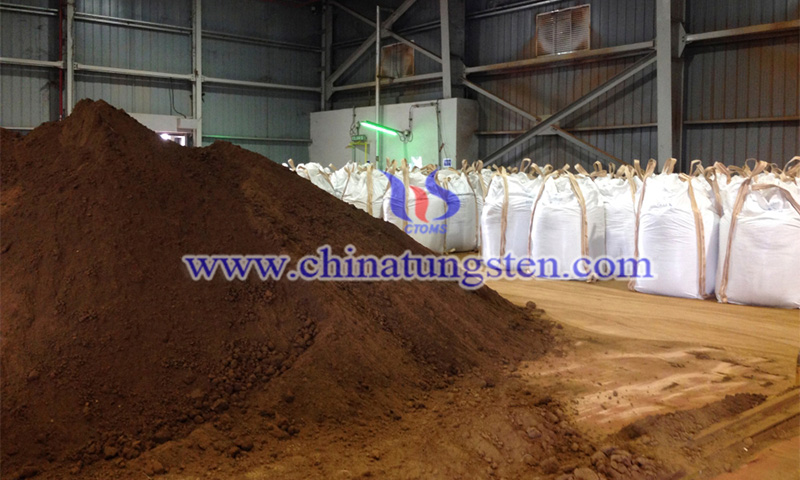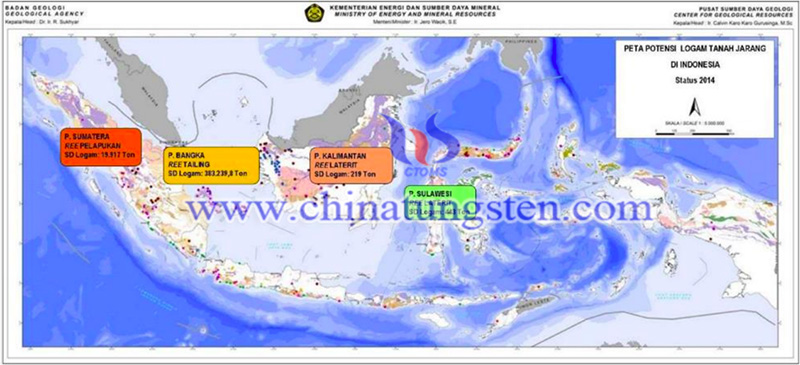Indonesia Maps Rare Earth Element Reserves for Industry Goals
- Details
- Category: Tungsten's News
- Published on Wednesday, 20 April 2022 13:43
Indonesia’s government has developed a rare earth element reserve plan as part of a plan to develop the rare earth downstream industry. "The ministry has identified eight sites containing rare earth reserves and plans to explore more areas by 2024," said Ridwan Djamaluddin, mining director-general of the Ministry of Energy and Mineral Resources Ministry.
The eight projects are still in the early stages of exploration, he told House Commission VII, which oversees energy and mineral resources, at a hearing in Jakarta. Of these eight projects, Bangka Belitung, North Sumatra, and West Kalimantan have rare earth mineral reserves of approximately 207,397 tons, 19,917 tons, and 219 tons, respectively.

By comparison, China, the world's largest miner of rare earths, has a total reserve of 44 million tons of rare earth minerals. Mapping rare earth reserves are part of the government's efforts to develop rare earth downstream industries, with a focus on defense and renewable energy industries.
Rare earth elements have a wide range of applications, including in automobiles, consumer electronics, and renewable energy power plants. They can be found in hybrid motors and generators, nickel-hydrogen batteries, diesel fuel, cell phones, computer and TV screens, and optical lenses.
The Energy Ministry plans to conduct a more detailed exploration of rare earth reserves in several areas by 2024, including Ketapang in West Kalimantan, Sibolga in North Sumatra, and Pegunungan Tiga Puluh in East Sumatra. According to Ridwan, exploration is currently being conducted by state-owned tin miner PT Timah and private companies, including mining companies PT Mitra Stania Prima and PT Stanindo Inti Perkasa.
Ahmad Zuhdi Dwi Kusuma, an industry analyst at state-owned Mandiri Bank, said the domestic rare earth market will grow "sooner or later" in line with the development of the domestic renewable energy industry.

However, he noted that the Indonesian production of rare earths will face stiff competition from their Chinese counterparts, which are more readily available. Indonesia will need to professionalize its rare earth production to gain a competitive advantage.
According to the U.S. Geological Survey, global rare earth ore production is estimated at 280,000 tons in 2021, a 16 percent annual increase. Processing raw materials into finished products could increase the country's non-tax revenue from mining from an average of 40 trillion rupiahs per year to 1 trillion rupiahs per year, according to DOE estimates.
Indonesia has launched its mineral downstream program, enacting a ban on nickel ore exports from 2020 to force miners to develop nickel processing facilities. Nickel can be processed into stainless steel and automotive batteries. Similar government export bans on bauxite and copper anode sludge are in the works. The Ministry of Industry is continuing to develop a roadmap for the downstream rare earth industry, which includes plans to inventory domestic reserves and restrict exports of certain products, such as hydroxide and carbonate minerals.
"We think this is a very strategic issue," Taufiek Bawazier, director-general for metals, machinery, transport, equipment, and electronics at the Ministry of Energy and Mineral Resources, said at the same hearing. "Indonesia needs to estimate the reserves of rare earth elements and clarify the projects that can be mined to attract investment."
- Rare Earth Manufacturer & Supplier, Chinatungsten Online: www.chinatungsten.com
- Tungsten News & Prices of China Tungsten Industry Association: www.ctia.com.cn
- Molybdenum News & Price: news.molybdenum.com.cn
- Tel.: 86 592 5129696; Fax: 86 592 5129797; Email: sales@chinatungsten.com



 sales@chinatungsten.com
sales@chinatungsten.com